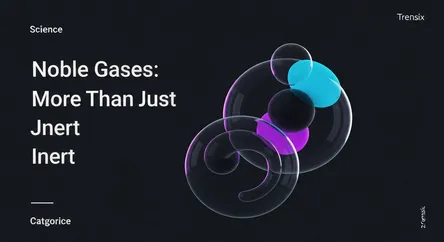Science
Noble Gases: More Than Just Inert

Uncover the properties of noble gases, the Group 18 elements like helium and argon. Learn why these "inert" gases are vital for modern technology.
What is it?
The noble gases are a group of chemical elements in Group 18 of the periodic table. They include helium, neon, argon, krypton, xenon, and the radioactive radon. Their defining characteristic is a full outer shell of electrons, which makes them extremely stable and gives them very low chemical reactivity. Under normal conditions, they are all odorless, colorless, nonflammable, monatomic gases. Historically called "inert gases" because it was believed they could not react with other elements, this name is now less accurate as compounds have been formed with some of them.
Why is it trending?
The reputation of noble gases as being completely inert is being challenged by modern chemistry. Scientists are increasingly able to create compounds with heavier noble gases like xenon and krypton, opening new avenues for chemical synthesis. Furthermore, their unique physical properties are in high demand for cutting-edge technology. Their use is growing in sectors like aerospace, semiconductor manufacturing, and medical imaging, where liquid helium is essential for cooling the superconducting magnets in MRI machines. Research into trapping noble gas atoms in new materials like graphene is also showing promise for quantum technology applications.
How does it affect people?
Noble gases are used in many everyday applications. Helium, being lighter than air, fills party balloons and airships. A helium-oxygen mix is used by deep-sea divers to prevent decompression sickness. Neon is famous for its use in vibrant advertising signs, which glow with a reddish-orange light when electricity is passed through the gas. Argon provides a non-reactive atmosphere for welding and is used to protect the filament in incandescent light bulbs. Krypton and xenon are used in high-intensity lamps, such as car headlights and photographic flashes, and in lasers for corrective eye surgery.